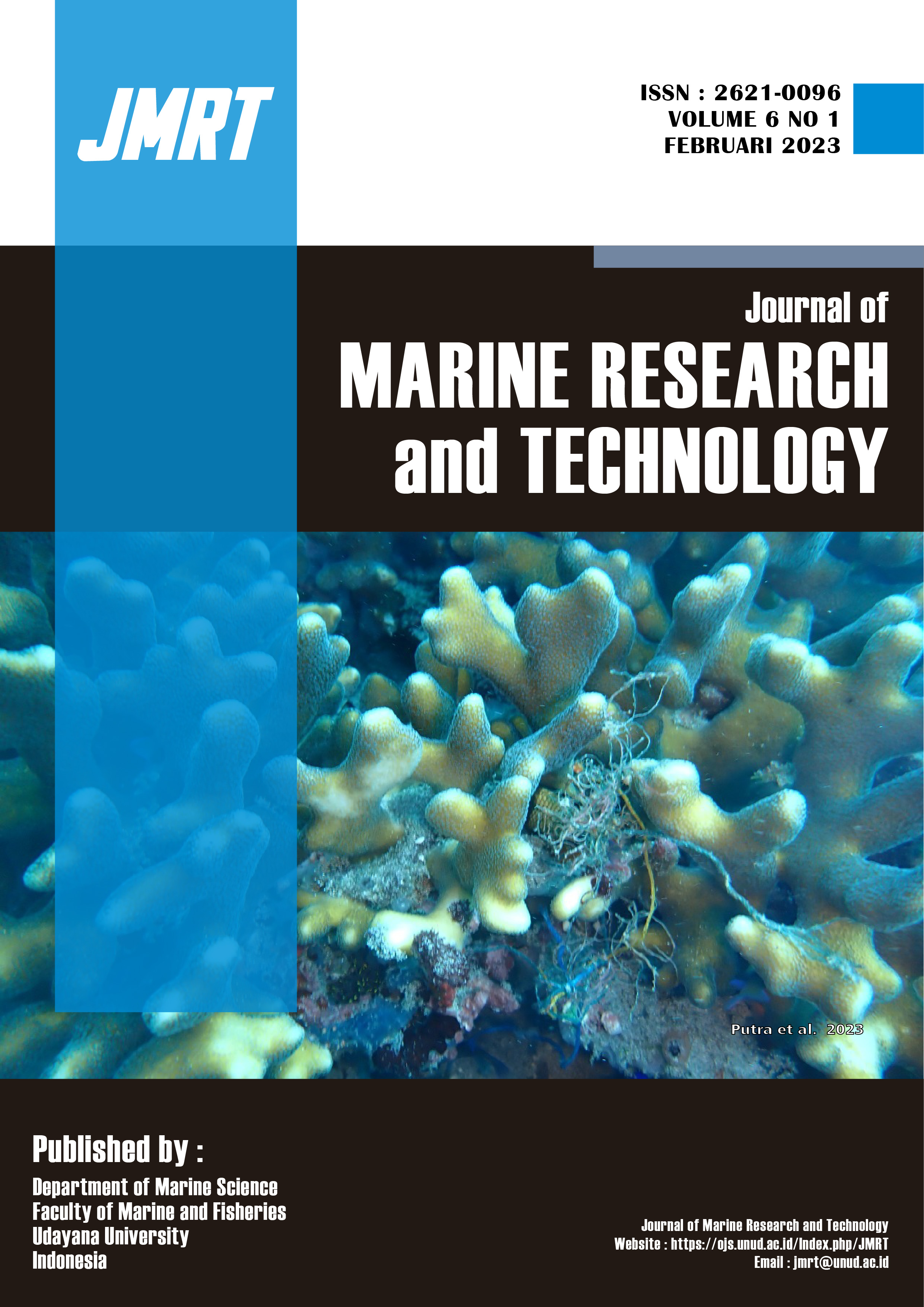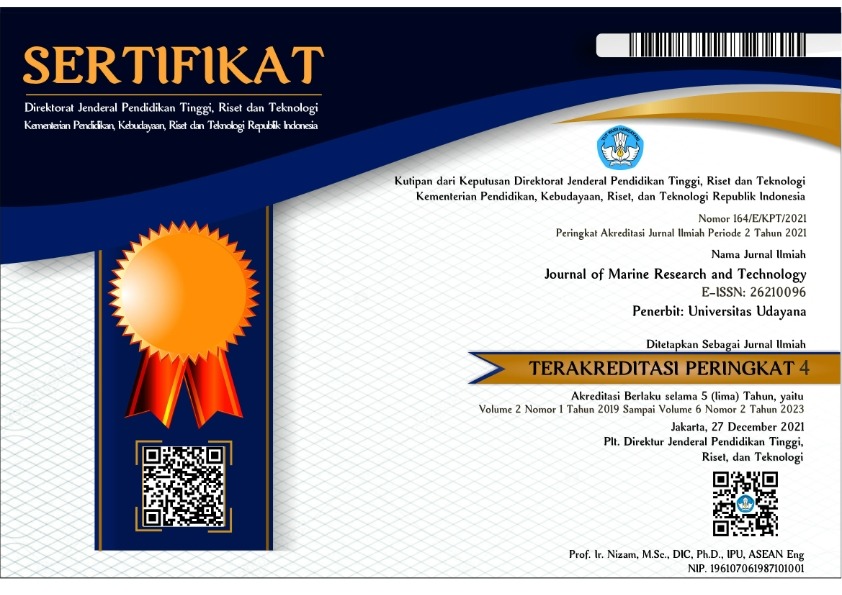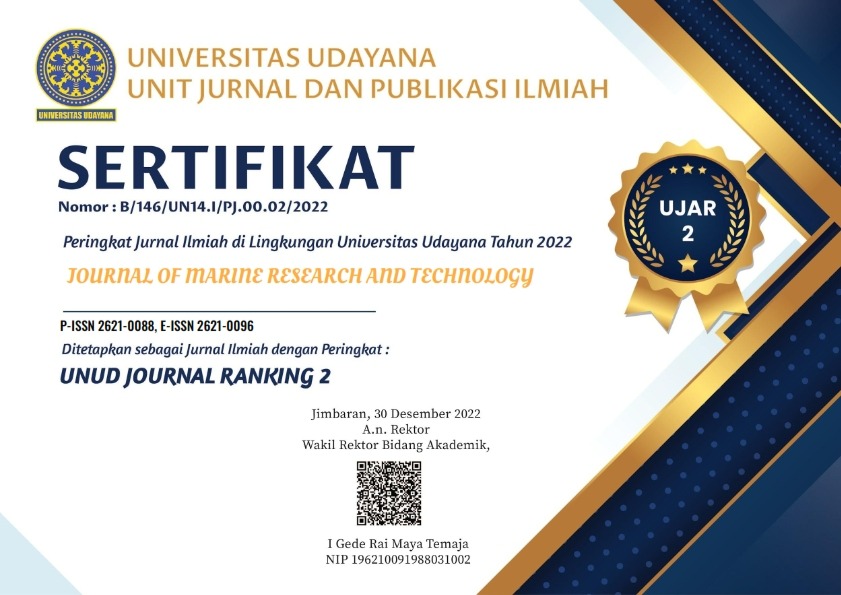Konsentrasi Makroplastik Pada Ekosistem Terumbu Karang Di Perairan Pesisir Pemuteran Dan Padang Bai
Macroplastic; Coral reefs; Pemuteran; Padang Bai
Abstract
Marine debris can be a severe problem in the coastal areas and small islands of Indonesia, which are the habitat of marine organisms and their ecosystems. This is, of course, related to unmanaged waste in various provinces in Indonesia, such as the Bali Province, where as much as 52% of waste in Bali needs to be appropriately managed. Marine debris can be generated from various activities on land and at sea, such as residential areas, industrial activities, offshore activities, and other activities on the island of Bali. The waters of Pemuteran and Padang Bai have coral reef ecosystems. Coral reefs function as a food warehouse for fisheries, a place to live and spawn, and physically coral reefs function as breakwaters and beach protectors. Marine debris can harm coral ecosystems, where it can cause scratches, shards, and disease to corals. This study aimed to analyze macroplastics' characteristics, concentration, and potential relationship to coral reefs. The macro plastic survey used an adaptation of the CSIRO method. The results of this study indicate that the macro plastic characteristics found in the Pemuteran waters were soft plastic types with concentration values ??ranging from 0.02 to 0.03 pieces/m2. In contrast, there were fiber, soft plastic, and hard plastic types with higher concentration values in the Padang Bai waters. Ranged from 0.09 to 0.12 pieces/m2. The ratio of macroplastic to the percentage of live coral cover is 0.98, which means it is inversely proportional; if the amount of macroplastic increases, it will decrease the percentage of live coral cover. The effect of microplastic on the percentage of live coral cover was very significant, with a determination value of 0.96.
Downloads
Copyright Notice
The copyright to this article is transferred to Journal of Marine Research and Technology (JMRT). The copyright transfer covers the exclusive right and license to reproduce, publish, distribute and archive the article in all forms and media of expression now known or developed in the future, including reprints, translations, photographic reproductions, microform, electronic form (offline, online) or any other reproductions of similar nature.






